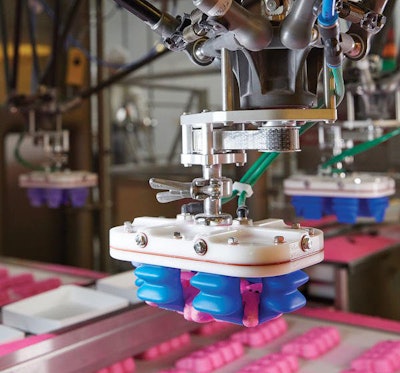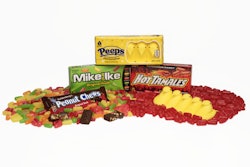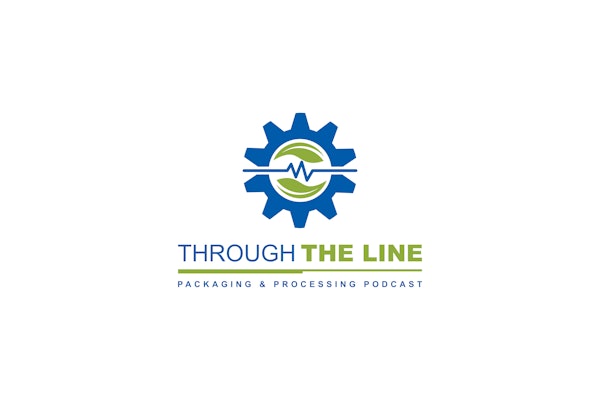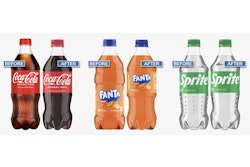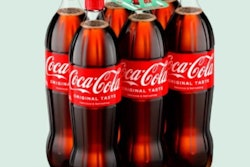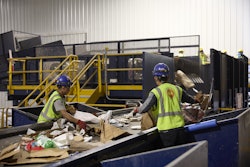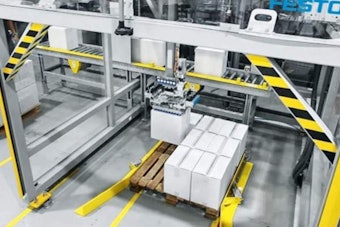Founded in 1923 by Russian immigrant Sam Born, Just Born Quality Confections is a third-generation family-owned candy manufacturer known for iconic national brands PEEPS®, MIKE AND IKE®, and HOT TAMALES®, along with several regionally known candies.
Now the U.S.’s tenth largest candy company, Just Born is led by family owners Chairman of the Board David Shaffer and CEO Ross Born. The company’s products are made domestically by 500 associates, most of whom are at company headquarters and manufacturing facility in Bethlehem, PA, where Peeps, Mike and Ikes, and Hot Tamales are produced and packaged.
As you’d likely guess, the Peeps brand is the company’s most well known—particularly the chick- and bunny-shaped marshmallow candies synonymous with the Easter holiday. Each year, Just Born produces 2 billion Peeps for all of the four major holidays. But Easter represents a majority of that total.
Things that are produced in the billions almost invariably require automation. But other than the most standardized, high-volume sellers, Peeps are both made and packaged in a wide enough variety of formats so as to have resisted packaging automation over the years.
Plus, the products’ delicate, sticky marshmallow composition and sugar coatings make them tough for machines to handle. In fact, one line of Peeps even required virtually all manual labor, at least until recently. To get the picture, let’s take a look at the product line. And bear in mind, we’re talking just the Peeps here, not Mike and Ikes, Hot Tamales, or other dissimilar formats.
Peeps Brand formats and SKU proliferation
The highest volume Peeps shapes, the basic chicks and bunnies, are sold as what the manufacturer calls cluster products. The general format is a 1x5 cluster of Peeps chicks, or a 1x4 cluster of Peeps bunnies, loosely joined “shoulder to shoulder, hip to hip,” within a pack. These single-file formats are most often oriented next to an identical cluster (or two) within a flow-wrapped chipboard tray. Each clustered row of chicks is picked and placed into individual trays so as to remain separated from its neighboring tray of chicks, creating two 1x5 clustered rows in a typical 2x5 format, 10-count pack. The bunnies’ geometry allows them to pack into a single flow-wrapped chipboard tray without separation in 1x4, 2x4, or 3x4 formats for 4-, 8-, or 12-count packs respectively. These standard chicks and bunnies products don’t deviate much from this handful of high-volume formats.
Most important to understand about bunnies is that, at least internally, Just Born considers them to be two-dimensional (2D) products with variation only occurring along two axes. This species of Peep was already automated some time ago, with integrated lines that are devoted only to this 2D format.
In recent years, Just Born rolled out its PEEPS® DELIGHTS™ collection of chocolate-dipped marshmallow chicks that are decidedly three-dimensional (3D) in geometry. The Delights line consists of individual Peeps. Instead of an attached-at-the-hip cluster, each individual higher-end, lower-volume Peep needed to be placed in its own nesting divot within a thermoformed tray, creating 1x3 product that is then flow-wrapped into a printed film pack. These 3D Peeps thermoformed trays had, until recently, been hand-placed because the product itself was so delicate.
“You can imagine the amount of labor that went into that. Three of the four belts typically had a crew that was around 13 to 15 people depending on what product run,” says Randall Copeland, senior vice president supply chain operations at Just Born. “And the fourth belt required 28 people on the line, so when you scheduled that fourth belt before this installation, you just wiped out the whole labor force, and this product was the only one you could run.”
Goals and challenges in automating
Just Born’s primary goal in looking to automation was to solve this labor problem. An additional goal was to automate repetitive, potentially ergonomically unfriendly labor out of the line in an environment where, as we all know, good labor is hard to find.
“We needed a way to efficiently produce our 3D Delights line,” says Just Born president and COO David Yale. “We think we’ll see tremendous growth on that part of the business.”
And if they were going to take the plunge, they needed to automate tray loading of all three Peeps categories—2D clustered Peeps, 3D clustered Peeps, and 3D Peeps singles. While the 2D Peeps already had dedicated, automated lines, a new line replacing the 3D Peeps manual labor belts—say a robotic pick and place line that could handle these three products styles—would grant flexibility throughout the Bethlehem facility to shift production and labor around as needed.
But the aforementioned degree of variability was an immediate hurdle. Now that it’s up and running, the new line handles 16 different recipes. The three different product lines equate to three different EOATs on the robotic pick and place system. There are ten different trays accommodating different cluster formats on five paperboard and five thermoform tray styles requiring denesting. Integrating a system that would be capable of such variation was daunting.
A secondary challenge, or more accurately, the other primary challenge, was the delicate handling that the products required at high speeds. Whether single or in a 1x5 unit cluster, Peeps can’t even be allowed to touch one another once they’re formed. They’d stick together, the sugar coating would rub off, and they’d gum up the entire works in the line.
“The marshmallow we use isn’t like the ones you buy in the bag, it is much softer,” Copeland says. “We could toughen them up for packaging if we used a bunch of additives like gelatin and starches, but who wants to eat that? The softness is very important for the identity of our product, but at the same time, any robot we’d be using couldn’t break through that sugar layer. As soon as you touch raw marshmallow, it is the stickiest object known to man. We’d have to shut down.” [See sidebar on page 40—Sticky considerations—for more on automation added to handle sticky products].
An integrated robotic solution
Ross Born and his Peeps-producing team first approached their acquaintance and fellow Pennsylvanian Craig Souser, CEO of JLS Automation, about this project at the JLS booth at PACK EXPO International 2016 in Chicago. Just Born was particularly drawn to an in-booth JLS robotic pick-and-place demo using a then-new Soft Robotics pneumatic gripper.
“Do you think this would work on something as delicate as Peeps?” Born asked him with a knowing grin. The Peeps purveyors had done their homework on the gripper, knew of JLS’s use of Soft Robotics as end-of-arm tooling in other projects, and had an existing relationship. JLS was thus on the early shortlist for project integration.
Just Born had a strong preference for a U.S. manufacturer. Being in the same time zone was even better. Just up the Pennsylvania turnpike? Hard to beat.
“Almost every piece on the eventual line is made in the U.S.,” Copeland says. “That has a lot of advantages to us in turnaround time for service.”
After a formal RFP/RFQ process, Just Born selected an integrated Talon robotic pick-and-place system, developed and integrated by JLS, that would handle all primary packaging and integrate seamlessly upstream and downstream. The entire system was integrated and assembled at JLS’s facility prior to installation.
In this case, vendor selection as part of integration was a collaborative process. JLS has its preferred suppliers and experience with certain OEMs, and Just Born had existing installations, relationships, and parts inventories of its own. In specifying equipment for the project, reliability was agreed upon to be key. Just Born gave JLS a lot of latitude, with one caveat. The only true Just Born “must do” was Allen-Bradley controls from Rockwell as much as possible.
“It was our desire, and JLS’ suggestion, that we make it have enough capabilities such that you can lose an entire cell and keep going at full rate,” Copeland says. “And usually it’s not anything to do with the cell. Normally it’s related to the wrapper, so we have very, very good wrappers, but short interruptions in product flow happens for a variety of reasons including routine operator checks. So you need to be able to shut down a wrapper to do normal maintenance for a few minutes and not have to worry about the lines going down.”
This is how they accomplished it.
Front of the line
After processing, individual Peeps or clusters thereof are conveyed on a common, unidirectional product transfer conveyor. An accumulation system by Rotzinger/Transver that had been used solely for product cooling is now used, with some integration from JLS and K2 Kinetics, as an automated buffer to accumulate Peeps in the unlikely event of downstream equipment issues while allowing the Peep cooking/depositing system to continue production at rate. After the accumulation system the product is conveyed to a JLS-provided product spreader to ensure good spacing for Peeps product across the wide pick belt.
Once Peeps enter this pick belt, they are conveyed past four consecutive, in-line Talon robotic pick and place cells by JLS Automation. Within each cell are four ABB Flexpicker delta-style robots, (four per cell, or 16 overall in the line), each powered by ABB robotic controls (see A in Figure 1).
JLS integrated Cognex as the vision system used for the robotic picking. Uniquely, this application uses infrared backlit vision instead of color-based detection and vision. In all three different types of Peeps products—2D, 3D single, and 3D cluster—basically any color in the Peeps pallet might be coming down the belt, so the vision system couldn’t be asked to depend upon visible light to find product on the pick belt. Cognex’s infrared (IR) backlighting solved this problem, turning the products it identifies into silhouettes rather than multi-colored Peeps.
The overall integrated line is controlled by a Rockwell Automation Allen-Bradley ControlLogix PLC in a master cabinet, which acts as a gateway for the system and ties the various machines and conveyor drives together.
“Because it was our convention and the convention of some of the other machines that were integrated on the line, we used Ethernet IP on the pure communication side, that’s obviously a standard protocol for Rockwell,” Souser says. “Also, our standard for HMI interface is either a PackML-like or a fully PackML execution, so for consistency in the screens, we use that as our standard, and that’s regardless of platform.”
In this spec, JLS was not asked to be constantly monitoring the machines or mining data. However, the machines have that inherent capability. For now, the line has remote access capability, so any issues with the cells can be addressed remotely.
Internal to Just Born, information is pulled off of drives and fed into (an existing) Wonderware SCADA system for information on OEE. Currently, the company is also looking into more sophisticated Rockwell analytics. At the outset of the installation and the project, the gains in productivity were so great that the company didn’t need to focus on continuous improvement—they had just made a giant leap. But as Just Born leans into the line’s capabilities, it sees continuous improvement via advanced analytics as an important business stabilizer.
“As the costs of components go up, the cost of labor goes up,” says Just Born’s Copeland. “We want to be able to at least hold our ground. That is, to have productivity increase at the rate that will offset our other increases…We’re always looking for ways to improve and our primary tool, frankly, is modernization and capitalization by putting in equipment that gives us better speeds, capital capabilities rates, and less labor, which is very advantageous to us because [some of] our workforce is retiring.”
Where the rubber meets the… Peep?
In the previously existing automated packaging lines, 2D Peeps were handled with a vacuum system. Generally speaking, despite some drawbacks, such systems have worked to Just Born’s satisfaction. But as is obvious when you look at a 3D Peep, you’re not going to pick it up with a vacuum.
Independently tested by both JLS and Just Born prior to the project and deemed, as mentioned above, a strong possibility, the Soft Robotics lineup of pneumatic grippers allows control of the amount of grip force down to .1 psi of pressure. That means the grippers have extremely fine control on how those individual gripping fingers wrap around the product. They behave in a similar way to how a human hand will wrap and cradle a 3D Peep, and it deals with competing necessities.
On the one hand, the gripper has to be gentle enough to successfully pick a Peep without breaking the sugar crust, contacting the underlying marshmallow, and making a line-stopping mess. On the other hand, it has to hold the Peep firmly enough to quickly move the product through space without dropping, accelerate and decelerate so as to place the product accurately, and do so at the rate that Just Born was aiming for. The ability of each gripper finger to curl, getting underneath the product so as to gently but firmly encircle it, is a big advantage for these types of product geometries.
Primary packaging
As mentioned, Peeps flow unidirectionally on the pick belt past each of the four nearly identical robotic cells, and the number of Peeps on the pick belt reduces to zero as they pass the first, second, third, and ultimate fourth cell. The pick belt terminates after it passes the fourth cell.
Each cell also contains a Delta wrapper lugged infeed conveyor that hovers just above the pick belt, perpendicularly intersecting it.
From the point of view of an operator standing downstream of the pick belt, at its terminus behind the fourth cell, each of these intersecting conveyors can be seen to carry primary packing—chipboard or thermoformed trays—from the left to right. Immediately upstream of the robotic cells, feeding these intersecting conveyors, are two machines per conveyor. Only one of the two will be live during any product run, depending on if the recipe calls for thermoformed or chipboard trays. Both permanently installed and available for easy changeover, they aren’t wheeled off the line when not in use.
When running thermoformed trays, each MGS [Coesia company] machine denests trays and feeds them on the conveyor over the pick belt for one of the four robots in the cell to fill (see B in Figure 1). For chipboard trays, a tray erector from Kliklok-Bosch forms the trays, hot-melt glues them into shape with Nordson hot melt applicators, and feeds them over the pick belt for the same purpose (see C in Figure 1).
After the Peeps are placed into the tray, they continue downstream, again perpendicular to and above the picking belt, now to the right of the robotic cell. There, they are flow-wrapped in flexible film on Delta/Ilapak flow wrappers on lug conveyors (see D in Figure 1).
From the wrappers the finished product flows onto NCC Automated Systems conveyors constructed using a variety of standard Dorner conveyors.
Ergonomics and use of space
Layout and schematics are differentiating factors on the Peeps line. With four primary packaging conveyors perpendicularly intersecting a single pick belt, each with a full complement of primary packaging equipment, that means there’s a lot of equipment on either side of each robotic cell that requires consumables for resupply. Whether that’s refilling the magazines of die-cut chipboard or thermoformed nested trays upstream of the cell, or replacing flexible film rollstock for the flow-wrappers downstream of the cells, care went into the layout during integration to ensure safe and simple resupply paths for operators.
Case in point, the flow wrappers are oriented not in identical succession, with all four facing the same direction. Instead, they are oriented so that each is a mirror image of its neighbor. That way, an operator standing between two flow wrappers can operate both almost simultaneously, translating into two trips to configure the flow wrappers instead of four. Ergonomic considerations like these were important in the line’s design and integration.
The first three robotic cells, or the three upstream cells on the pick belt, feed flow wrapped packs into spiral conveyors (see E in Figure 1), elevating the product overhead and providing open operator access to the Delta wrappers. All the wrapped product conveyance was delivered by NCC Automated Systems using Dorner components. The wrapped product conveyors utilize high-friction belts which keep the product on the conveyor without the need for side guides. Elimination of side guides allows the wrapped product conveyors to run any recipe without requiring any changeover adjustments. The wrapped product conveyor after the fourth cell was also designed by NCC and Dorner, but due to the layout does not require the vertical spiral conveyor that the previous three required for operator access.
The first and fourth robotic cells feed one of two parallel case packing stations, the second and third robotic cells feed the other. These pick stations are situated perpendicular to the pick belt immediately downstream of the flow wrappers, so finished products make two 90-deg turns on conveyors after being flow wrapped.
End of line next to automate?
Just before entering either of the parallel case packing stations, product runs through one of two Mettler Toledo/Safeline metal detection systems (see F in Figure 1). Case erecting and case packing remains manual for the time being. But as the line evolves, don’t expect things to stay that way.
“When I made my first visit to the site after installation,” Souser says, “Ross Born, as soon as we walked into the room said, ‘Well, you created a real problem for me. I have to buy case packers now because our people can’t keep up with the line anymore.’” The ripple effect of upstream automation will doubtless be felt downstream.
Of note, Just Born has recently pivoted to use more printed, retail-ready corrugated cases alongside its more traditional corrugated. This will create an additional measure of complexity in case erecting and case packing down the road; no doubt Just Born will want to do both with single machines.
Hand-packed cases are then conveyed on the two parallel remaining lines to one of two Wexxar Bel case sealer/tapers (see G in Figure 1), one at the end of each case-packing station. A pair of waxjet printers from Markem Imaje code and mark the cases to finish the line. Palletizing and stretch wrapping are also done by hand.
Project scope and big picture
In terms of capital equipment outlay, size, and scope (you name the metric, really), the JLS integrated line was among the biggest projects ever for Just Born, if not the biggest. It cleared the dual hurdles of product variability and product fragility, and in doing so unlocked productivity throughout the plant, not just on the previously troublesome 3D Peeps line.
“This gives us so much flexibility,” Yale says. “The system that has been put in is not only for Peeps Delights, but it gives Randall [Copeland] and his team the capability of also doing our regular Peeps on that line in a variety of different configurations and packs, which we’ve never had the flexibility to do on any of our lines before. We can do bunnies, chicks, regular, filled, bottomed. It’s pretty amazing having that jack of all trades line that is also very efficient, where as a line before had 20-some odd people packing product into trays which was inefficient. We wanted a way to justify the build of a production allocation to that line and we are getting it and looking to that line to take on more workload in the future.”
But all these changes were tactical wins that ladder up to improvement in Just Born’s (every business, really) strategy: to sell more products at a better margin in order to grow.
“Our flexibility in manufacturing, of product type and also of human-labor allocation to production, have all been positively impacted. It was a win on many different fronts,” Yale says. “It’s a facilitator for growth, which I think is the best way to think about it.”
Copeland agrees. “It’s now more economically efficient to sell these really nice premium products; the efficiency matches that of our larger volume products, and this has enabled us to go back into Walmart and get them excited about it, and getting more listings than we could have if we didn’t have this. We can look at capital equipment as a sales aid.”
Where does the labor go?
The sometimes-uncomfortable flipside of the coin when it comes to automation, depending on your perspective, is the feeling that people are losing jobs to robots. Readers of this magazine will know that’s largely not the case, with a dearth of qualified talent in the first place. Secondarily, these types of jobs—hand-packing single, fragile, sticky products for hours on end, in this case—aren’t particularly desirable, challenging, or ergonomically friendly. At Just Born, the real problem was the natural process of long-time employees aging out of the workforce with nobody there to replace them.
“It really helped me out because I cannot hire enough people,” says Randall Copeland, Sr. VP, Supply Chain Operations, Just Born. “What this did was it allowed the attrition of an aging workforce, folks to be able to leave and me not have to hire so many because hiring good people is not easy in these days and times. So nobody lost a job when we added this automation. Conversely, I just didn’t have to hire so many people and it enabled me to put them where I need them, which is growing the Mike and Ike and Hot Tamales business. It really helped out in a way we never even anticipated.”
Spreading, Spacing Key to Avoid Sticky Situation
Upstream of primary packaging and the new robotics, a large accumulation system/buffer by Rotzinger/Transver had been in place since before the installation. But in the old days of manual packaging on the 3D line, the primary function of accumulation was to give the product adequate cooling time. With potential for increased speeds, and the need to be sure products are always well spaced to avoid breakage and marshmallow hell, JLS Automation collaborated with K2 Kinetics and the OEM Rotzinger/Transver “to integrate the system as far as changing the speeds at which the line is running moment to moment based on the state of the system as a whole. This allows us to dynamically control the line as it’s running, reducing scrap and increasing throughput” says Lucas Boucher Project Engineering Manager, JLS. “The Rotzinger buffer now operates as a true buffer while also acting as a cooling rack.”
A 45-deg transfer spreader belt is now used to spread product widely and evenly across the pick belt so they don’t touch, essentially getting more product separation across the belt.
Beyond just avoiding products touching, the spreading effect allows the pick and place robots with their Soft Robotics robotic “fingers” enough space between each individual, or cluster of, Peeps.
“We actually only had to spread one out of the three different product types,” Boucher says. “With the spreading solution we implemented, it’s neat that just by running conveyors either at the same speed or at variable speeds, we can either have the spreading function on or off, without having to do any changeover whatsoever.” PW
QC and Gripper Sanitation
In the upstream process, Just Born and JLS both noted early on that if sugar was not properly and evenly deposited on the Peep, the robot handling could create a gooey mess. In response, Just Born tightened its quality control program in terms of shape and processing. There weren’t wholesale process changes to accommodate the robotic line, but by making small alterations in the QC process, Just Born was also able to reduce the amount
of scrap.
“The additional QC wasn’t just to keep the robots happy,” Souser says.
Just Born also wanted to make an improvement in terms of food safety, and JLS provided some of the construction that it normally would only provide in a true wash-down environment. Just Born wanted the most sanitary picking system they could get. The grippers are cleaned during changeovers between Peep formats—2D clusters, 3D clusters, or 3D singles—and undergo a sanitation review.
“You remove the actual grippers at the point where it is connected to the arm, and then you literally dip the tool in a bucket of no-rinse sanitizing solution. That’s all there is to it. Changeover on a gripper is 30 seconds,” Copeland says. “Basically, everything from the pick belt down is wash-down capable, and all the upstream conveyors get sprayed down,” Boucher adds.
Since this project went from hand-packing to automated packing, a gripper changeover is analogous to people throwing the gloves away between different runs. Instead of throwing gloves away, they’re cleaning these tools.
Sugar buildup was also a concern, but the team realized that once sugar builds up to a minimal degree to cover the grippers, it ceases buildup. A lot of testing and validation occurred at JLS before the project started before it was revealed not to be a problem. pw
Mike and Ike Brand Bounces Back
In recent years, Just Born resurrected venerable but stagnant Mike and Ike brand candies with a clever social media campaign pitting fictional Mike against fictional Ike in an equally fictional falling out. The idea was to mimic classic musical duo splits, citing “artistic differences” with all the mock sanctimony they could muster. They broadcast these feigned dramatics over social media channels to reach a young audience that didn’t previously have Mike and Ike on its radar. It was so successful that the company soon needed to further automate its Mike and Ike and similarly packaged Hot Tamales lines.
Mike and Ike and Hot Tamales primary package is a 5-oz rectangular printed chipboard carton commonly called a theater box, available nationally in all retail channels. Another key pack-type for the brands is a smaller .78-oz printed chipboard carton referred to as ‘changemakers’ since they are pre-priced at 25 cents on the small box. These die-cut cartons had long been erected out of a magazine, filled, and sealed by cartoners at high speeds. With increase in the products’ popularity, Just Born engineers needed downstream equipment to match speeds of up to 600 boxes per minute, and new to the mix, they were hoping to pack the .78-oz. cartons into 24-count retail-ready cartons.
Shopping for piecemeal solutions, they discovered a single machine system from Aagard that could do it all, from collating to retail ready-case packing, to packing the retail-ready cartons into corrugated cases, to palletizing.
The custom Aagard machine also integrates waxjet printing from Markem Imaje, many integrated operations that typically get put on the line later, and all the communication signals, 30 different safety zones, operated under a single Rockwell PLC control.
“[The .78-oz Mike and Ikes] are small, inexpensive products. If you want to sell something for 25 cents and make a profit, you need to make a lot of them,” Copeland says. “So these little ‘change makers’ come down the line and are filled by a Tishma machine at 600 boxes per minute. They are weighed and metal detected, at speed, before entering the Aagard. The machine takes those 600 individual cartons, at 600 per minute, and puts 24 into a retail-ready carton, then collates 16 retail-ready cases into a corrugated shipping case.”
The math works out to 384 individual cartons per shipper, so that roughly two case-per-minute clip sounds manageable, but palletizing takes place within the same machine, with no accumulation. That demonstrates the real driver in going with a single secondary packaging to end-of-line solution: savings in floor space by eliminating buffer zones and conveyance, while going to a single PLC control for everything from secondary packaging down to palletizing.
“It’s amazing,” Copeland added simply.
